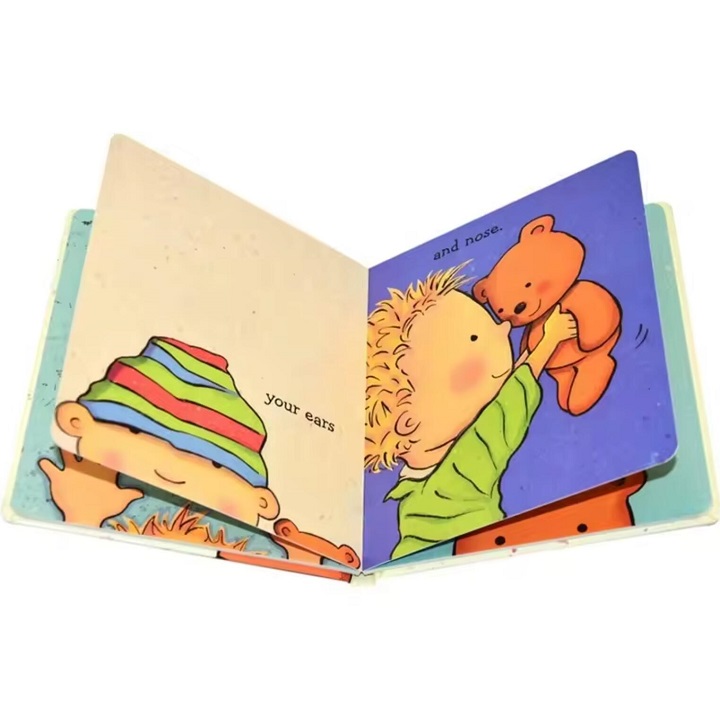Board books are a special type of book designed for young children, typically ranging from babies to toddlers. They are characterized by their durable and sturdy construction, which makes them ideal for little hands that may not yet be fully coordinated or gentle in handling objects. Unlike traditional printed books and hardcover books, board books are often made with thick, heavy-duty cardboard pages that are less likely to tear or bend when handled roughly. In this article, we will explore the features, benefits, and types of board books, as well as their role in child development and literacy.
Features of Board Books
The most distinctive feature of board books is their thick, rigid pages made of heavy cardboard or other durable materials. These pages are often laminated or covered with a soft, washable material like vinyl or plastic, which makes them easy to clean and resistant to damage from drooling, spills, and rough play. The covers of board books are also usually made of thick, padded material, often featuring colorful illustrations and simple text that appeals to young children.
In addition to their sturdy construction, board books also tend to have large, high-contrast images and bold, simple text that is easy for young children to recognize and follow. The font size is often larger than in traditional books, and the language used is simple and repetitive, making it easier for children to learn new words and concepts. Many board books also incorporate interactive elements like flaps, touch-and-feel textures, or sound effects, which can enhance the reading experience and stimulate a child's curiosity and imagination.
Benefits of Board Books
Board books offer several benefits for young children and their parents or caregivers. One of the most significant advantages is their durability, which makes them ideal for use by small children who may not yet be able to handle more delicate objects carefully. The thick, rigid pages and sturdy covers of board books can withstand rough handling, pulling, and even biting without tearing or breaking, which means that they can last longer and provide more value for the money spent on them.
Another benefit of board books is their ability to promote early literacy skills and foster a love of reading in young children. By exposing children to books at an early age, parents and caregivers can help them develop important cognitive, linguistic, and social skills such as vocabulary, comprehension, letter recognition, and storytelling. Board books are particularly effective for this purpose because they are designed to be engaging and interactive, with simple text and colorful images that capture a child's attention and encourage them to ask questions, make connections, and express themselves.

Types of Board Books
There are several types of board books available on the market, each designed to cater to different interests and developmental stages of young children. Some common categories include:
●Alphabet books: These board books introduce children to the letters of the alphabet and their corresponding sounds, often through simple rhymes or songs. They can help children develop phonemic awareness and build a foundation for later reading skills.
●Counting books: These board books teach children how to count and recognize numbers, often using simple illustrations and repetitive language to reinforce the concept of quantity and sequencing.
●Color books: These board books help children learn about colors and their names, often by showing different objects or characters in various shades and hues. They can also teach children about color mixing and sorting.
●Animal books: These board books introduce children to different animals and their characteristics, often through simple text and colorful illustrations. They can help children develop knowledge about the natural world and cultivate empathy and respect for living creatures.
●Touch-and-feel books: These board books feature textured surfaces or materials that children can feel with their fingers, often accompanied by descriptive text that helps them identify different sensations like softness, roughness, or smoothness. They can help children develop tactile perception and fine motor skills.
●Sound books: These board books incorporate sound effects or music into the reading experience, often through buttons or switches that activate recorded sounds when pressed. They can help children develop auditory perception and rhythm and enhance their engagement with the story.
Role in Child Development and Literacy
Board books play a crucial role in child development and literacy, as they provide a safe and enjoyable way for young children to explore the world of books and language. By introducing children to basic concepts like letters, numbers, colors, and shapes, board books help them build a foundation for later learning and literacy skills. They also foster a sense of curiosity, creativity, and imagination, as children learn to interact with books and make meaning from the stories and images they encounter.
Moreover, board books can serve as a valuable tool for parents and caregivers to bond with their children and promote positive interactions and communication. By reading together, adults and children can share experiences, emotions, and ideas, and create a sense of closeness and trust that can last a lifetime. Board books can also provide a fun and engaging activity for families to enjoy together, whether at home, in the car, or on the go.
In conclusion, board books are a unique and valuable type of book that offers many benefits for young children and their caregivers. With their durable construction, simple text, and engaging illustrations, board books can help children develop important cognitive, linguistic, and social skills while fostering a love of reading and learning. Whether used as a teaching tool or a source of entertainment, board books are an essential component of early childhood education and literacy development.






























